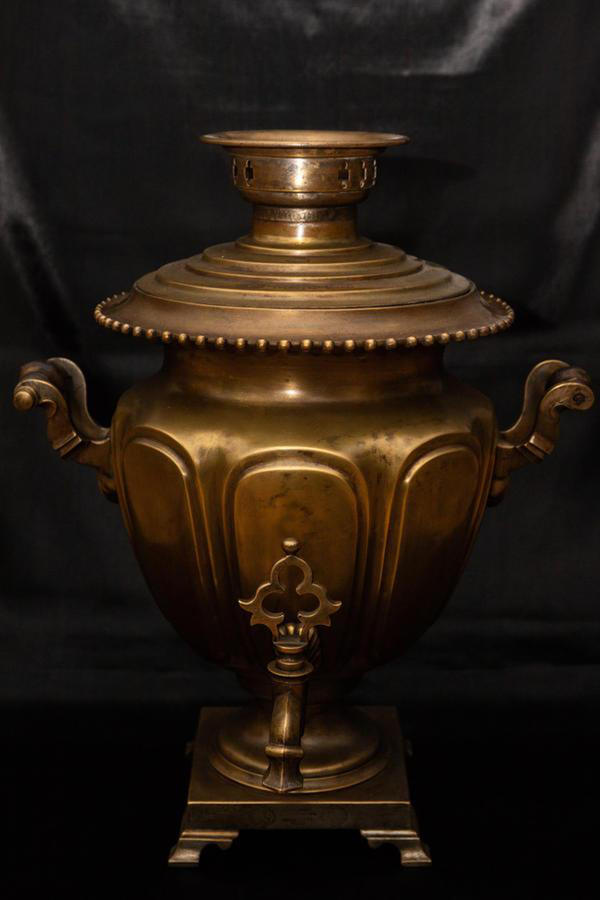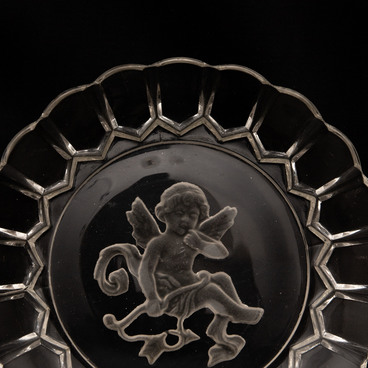After Nicholas II abdicated in 1917 he and his family, as well as the rest of his retinue were exiled to Tobolsk. Here the Romanovs stuck to a strict daily routine. Precisely at 8:45 morning tea was served. The Emperor always drank tea in his office with his daughter Olga, the rest of the family gathered in the dining-room at this time. At 13:00 breakfast was served, at 20:00 dinner. In the intervals between meals two more tea-parties were arranged: at 17:00 and at 23:00. Each time a copper samovar thoroughly polished was put on the table invariably. After Nicholas II abdicated in 1917 he and his family, as well as the rest of his retinue were exiled to Tobolsk. Here the Romanovs stuck to a strict daily routine. Precisely at 8:45 morning tea was served. The Emperor always drank tea in his office with his daughter Olga, the rest of the family gathered in the dining-room at this time. At 13:00 breakfast was served, at 20:00 dinner. In the intervals between meals two more tea-parties were arranged: at 17:00 and at 23:00. Each time a copper samovar thoroughly polished was put on the table invariably.
The figured samovar kept in the collection of the Tobolsk Historical and Architectural Museum was made at the end of the 19th – early 20th century at the factory of the merchants Batashev. The production name is engraved on the samovar’s cover. A square base is fitted with four legs to give stability to the item.
The samovar’s handles were made of two brass carved plates joined together with wooden holders. Elements made of wood were not heated so much as the metal parts, that is why the samovar was easy to carry.
The Batashev samovar factory was opened in 1840 in the suburbs of Tula, in Chulkova sloboda (large commercial settlement). The production was founded by the Tula armourer Stepan Batashev. He was doing very well, samovars were in demand and soon the armourer became a merchant. He moved from the suburb to Tula itself, built a house and a samovar workshop nearby. 8 workers and 4 apprentices were engaged in production all the time. If necessary, Batashev hired up to 6 apprentices more. His factory produced about 400 samovars per year.
In 1861 a heavy fire broke out in the samovar workshop. Soon after Stepan Batashev died. His sons – Vasiliy, Alexander and Pavel – undertook to restore the production. By the early 1870 the samovar factory under their management had again become a successful and prosperous enterprise. At the All-Russian manufacturing exhibition of 1870 the Batashev samovars were awarded a silver medal.
In 1898 the Batashev factory changed its name and became a Partnership of Steam Samovar Factory of the Inheritors of Vasiliy S.Batashev in Tula. After the revolution it was converted into the Tula cartridge-manufacturing plant.
The figured samovar kept in the collection of the Tobolsk Historical and Architectural Museum was made at the end of the 19th – early 20th century at the factory of the merchants Batashev. The production name is engraved on the samovar’s cover. A square base is fitted with four legs to give stability to the item.
The samovar’s handles were made of two brass carved plates joined together with wooden holders. Elements made of wood were not heated so much as the metal parts, that is why the samovar was easy to carry.
The Batashev samovar factory was opened in 1840 in the suburbs of Tula, in Chulkova sloboda (large commercial settlement). The production was founded by the Tula armourer Stepan Batashev. He was doing very well, samovars were in demand and soon the armourer became a merchant. He moved from the suburb to Tula itself, built a house and a samovar workshop nearby. 8 workers and 4 apprentices were engaged in production all the time. If necessary, Batashev hired up to 6 apprentices more. His factory produced about 400 samovars per year.
In 1861 a heavy fire broke out in the samovar workshop. Soon after Stepan Batashev died. His sons – Vasiliy, Alexander and Pavel – undertook to restore the production. By the early 1870 the samovar factory under their management had again become a successful and prosperous enterprise. At the All-Russian manufacturing exhibition of 1870 the Batashev samovars were awarded a silver medal.
In 1898 the Batashev factory changed its name and became a Partnership of Steam Samovar Factory of the Inheritors of Vasiliy S.Batashev in Tula. After the revolution it was converted into the Tula cartridge-manufacturing plant.



